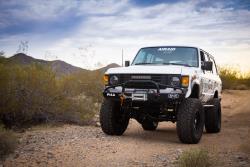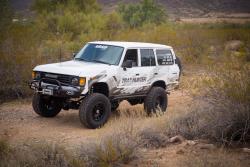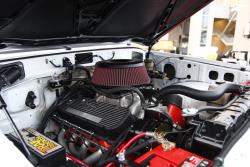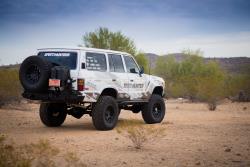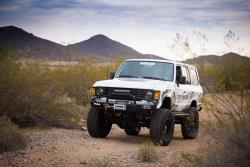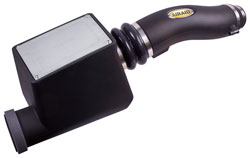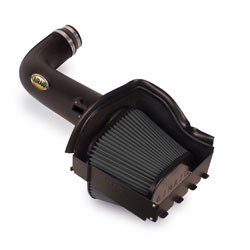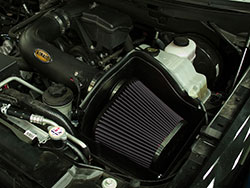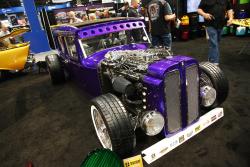
Faris' 1929 Plymouth under the lights at the 2016 SEMA show in House of Kolor's booth | Few custom cars can blow your mind in every possible way, but if there’s a car out there that can do it, it’s probably the “Plymouth Rock” 1929 Plymouth custom built by Andrew Faris at ACR Collision and Repair in Warman, Saskatchewan, Canada. Not only is the choice of car and the custom execution beautiful, but the custom’s 1,200 horsepower Cummins 6BT is ready to throw down some beastly performance in the pre-war Mopar.Faris’ customer originally wanted to build a massively powerful diesel truck, but he opted for more passenger room for his children in the custom machine. That customer found a 1929 Plymouth near the side of the road and given his request for a Cummins engine—used in Dodge trucks—the pre-war Plymouth seemed a natural fit. Owing to the extent of Faris’ customization, not much is left of the original Plymouth. “The only parts that you can really say are left from the original car are the two front doors,” Faris said. 
Teak wood and a 1,200 Cummins six-cylinder stand out on the 1929 Plymouth Rock custom | Everything else was modified or custom-built from scratch. Faris hand-built the frame from 2x4-inch square tubing, adding custom tube-axle and differential setups for the four-link and air suspension. The body was widened not just for aesthetics, but also to create more space in the cabin and, more importantly, to accommodate the width of the big engine, which needed more firewall and more car width for the exhaust routing. Faris elected, however, to leave the profile the same because the original Plymouth body worked well with the intended proportions.Industrial Injection in Salt Lake City built the engine to the primary requested specs and shipped it in a crate to Faris in Saskatchewan. The engine, a 5.9-liter Cummins six-cylinder, is compound-turbocharged to make the absolutely insane figures of 1,200 horsepower and 2,100 lb-ft of torque. The compound-turbo setup breathes through an AIRAID cone filter. 
The view from the driver's seat includes a glimpse at the monstrous 1,200 horsepower Cummins diesel | To get that immense power to the ground, a Bowler-built 4L80E transmission was selected with a shift kit. A Strange center section housed the Eaton TrueTrac limited-slip differential to carry all the torque to the wheels. Unlike other diesel builds, Faris didn’t want to dump the exhaust right out of the engine bay. Instead, he routed the exhaust under the low-slung frame, then brought it up through the back of the sedan body to exit through the roof via tractor-style rain caps to complement the modern industrial theme with a tidy finish. The plans developed over the project’s two years. Unlike other projects that might have stuck closely with original concept drawings, Plymouth Rock grew as building proceeded. “The project just evolved as it went,” Andrew said. “It wasn’t a car that was rendered from the beginning. It was kind of just something I freestyled with.” 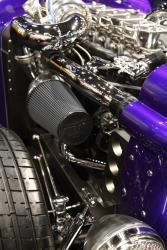
The Plymouth Rock's compound-turbo setup breathes through an AIRAID filter. | Faris’ original concept envisioned the car in a modern industrial design with unpainted bodywork and materials like stainless steel and aluminum that can be left on their own to withstand the elements. However, the opportunity arose to paint it in House of Kolor’s limited-edition 2017 color Indigo Blue. That necessitated some relatively last-minute changes to the original materials and Faris turned to something he’d used in previous builds to complete the desired aesthetic: wood. Specifically, he turned to naturally oiled teak wood because it could withstand weathering and that one design element spawned more creativity over Plymouth Rock’s build. “It just played into the project,” Andrew said.The teak was first applied as spokes to the custom-designed, Evod Industries wheels, 19 inches in the front and 21 inches in the rear. Those wheels sport 325/30R19 and 325/30R21 Pirelli tires that the healthy engine could easily vaporize into dense tire smoke. In addition to the teak wheels, Andrew applied teak to several more surfaces to accentuate the design. Faris covered the steel transmission tunnel with a teak-wood veneer that had to come from the East Coast, where teak is primarily used in shipbuilding. Accents and trimwork in the interior are also in matching teak. Faris completed the teak treatment by adding a custom, old-school trunk to the back of the car. 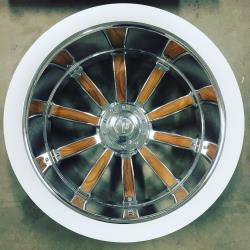
Andrew Faris applied teak wood to the wheels, transmission tunnel, trunk, and interior trimwork | The single instrument in the dashboard was a custom-designed version of Classic Instruments Big Ol’ Gauge, which Faris had styled like an old steam-era industrial gauge. The Lokar handles, shifter, and emergency-brake handle all fit the modern-industrial design, as well. The upholstered bucket seats and a matching bench in the rear came from Relicate Leather. Most of these details came together in a relative last-minute thrash once the customer decided he wanted to debut the car at the SEMA show in November 2016. Faris and designer Mike Miernik faced a five-month window to complete a number of intense custom aspects of the Plymouth. Those included everything from the paint to the custom wheels, which include the whitewall as part of the wheel and fit the teak wood-spoke inserts. Unfortunately, the tight deadlines on the project completion mean that Faris hasn’t had the chance to take it out for a blast on the open road yet. With the Canadian winter firmly in place, he has no intentions of taking it out until the thaw, but he’s looking forward to a spirited drive in the 1,200 horsepower car he estimates weighs a bit over a ton. “It’ll be a beast,” he concluded. |

